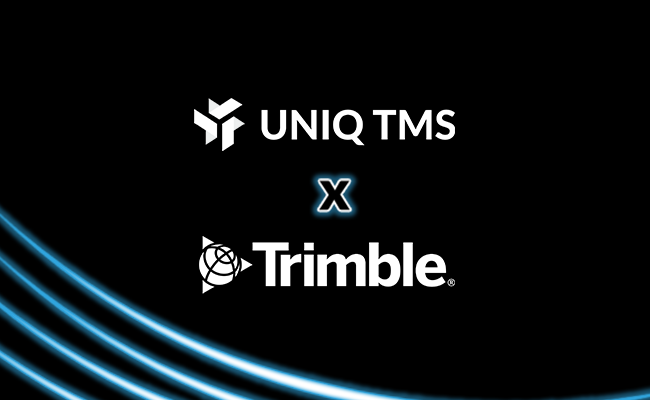
With the advent of Artificial Intelligence (AI) and Transportation Management Systems (TMS), the way fleets operate has undergone a paradigm shift. Understanding the role that AI and TMS play in fleet management is crucial in harnessing the full potential of these technologies and staying ahead of the competition.
Understanding AI and TMS in Fleet Management
Before delving into the impact of AI and TMS on fleet management, let’s first define these terms. AI refers to the ability of machines to simulate human intelligence and carry out tasks that typically require human cognition. TMS, on the other hand, is a software solution that helps streamline transportation operations, manage vehicles, and optimize routes. Together, AI and TMS form a powerful combination that revolutionizes fleet management.
Defining AI and TMS
Artificial Intelligence, often abbreviated as AI, is the use of computer systems to perform tasks that would typically require human intelligence. In the context of fleet management, AI enables vehicles and systems to make data-driven decisions, optimize routes, predict maintenance needs, and enhance efficiency.
Transportation Management Systems, or TMS, are software solutions designed to improve the efficiency and effectiveness of transportation operations. TMS provides functionalities such as route planning, vehicle tracking, performance monitoring, and load optimization. By integrating AI with TMS, fleet managers can harness real-time data and make informed decisions to streamline operations.
The Role of AI and TMS in Fleet Management
AI and TMS have a significant impact on fleet management by providing valuable insights and optimization capabilities. These technologies enable fleet managers to make data-driven decisions, reduce costs, enhance safety, and improve overall efficiency.
One of the key benefits of AI in fleet management is its ability to optimize routes. By analyzing real-time traffic data, weather conditions, and historical patterns, AI algorithms can determine the most efficient routes for each vehicle in the fleet. This not only saves time and fuel but also reduces carbon emissions, contributing to a greener and more sustainable transportation system.
In addition to route optimization, AI can also predict maintenance needs, allowing fleet managers to proactively address potential issues before they become major problems. By analyzing vehicle performance data, AI algorithms can identify patterns and indicators of potential breakdowns or maintenance requirements. This predictive maintenance approach helps minimize downtime, increase vehicle reliability, and reduce repair costs.
When combined with TMS, AI further enhances fleet management by providing real-time insights and decision-making capabilities. TMS systems collect data from various sources, such as GPS trackers, fuel consumption sensors, and driver performance metrics. By integrating AI algorithms into the TMS platform, fleet managers can analyze this data in real-time and make informed decisions to optimize operations.
For example, AI algorithms can analyze driver performance data to identify areas for improvement, such as excessive idling or harsh braking. Fleet managers can then provide targeted training or coaching to drivers, leading to safer driving practices, reduced fuel consumption, and lower maintenance costs.
In conclusion, AI and TMS are powerful tools that revolutionize fleet management. By leveraging AI algorithms and integrating them into TMS platforms, fleet managers can optimize routes, predict maintenance needs, and make data-driven decisions to improve efficiency, reduce costs, and enhance overall performance. The combination of AI and TMS is a game-changer in the world of fleet management, paving the way for a more sustainable, efficient, and safe transportation system.
The Impact of AI on Fleet Management
With AI, fleet managers can unlock a whole new level of efficiency. By leveraging machine learning algorithms and predictive analytics, AI enables organizations to improve fleet utilization, reduce fuel consumption, and minimize vehicle downtime.
Enhancing Efficiency with AI
AI enables fleet managers to optimize routes based on real-time data, such as traffic congestion, weather conditions, and vehicle performance. By continuously analyzing data from various sources, AI algorithms can adapt to changing situations and provide the most efficient routes. This not only saves time and fuel but also ensures timely delivery and customer satisfaction.
Moreover, AI can identify patterns in driver behavior and provide feedback to improve fuel efficiency, safety, and compliance. Real-time monitoring and analysis of driver performance enable fleet managers to address any issues promptly and take proactive measures to enhance overall efficiency.
Imagine a scenario where an AI-powered fleet management system detects a sudden increase in traffic congestion on a particular route. The system quickly reroutes the vehicles to an alternate path, avoiding the traffic jam and ensuring on-time deliveries. Additionally, the AI system analyzes the driving patterns of individual drivers and provides personalized feedback to help them optimize fuel consumption and reduce wear and tear on the vehicles. This level of detailed analysis and real-time decision-making is only possible with AI.
Predictive Maintenance and AI
One of the key areas where AI revolutionizes fleet management is predictive maintenance. By analyzing data from sensors, AI algorithms can predict potential faults and maintenance needs before they occur. This allows fleet managers to schedule maintenance proactively, minimizing vehicle downtime and preventing costly breakdowns.
Furthermore, AI can analyze historical maintenance and repair data to identify patterns and optimize maintenance schedules. By avoiding unnecessary servicing and replacing parts only when needed, fleet managers can significantly reduce maintenance costs while ensuring the optimal functioning of their vehicles.
Consider a scenario where an AI-powered fleet management system detects a slight decrease in engine performance in one of the vehicles. The system analyzes the data from various sensors and predicts that a specific part is likely to fail in the near future. Based on this prediction, the fleet manager schedules a maintenance session to replace the faulty part before it causes any major issues. This proactive approach not only saves the company from unexpected breakdowns but also prevents potential accidents and ensures the safety of the drivers and other road users.
Moreover, the AI system analyzes the historical maintenance and repair data of the entire fleet to identify patterns. It discovers that certain parts tend to fail more frequently in specific weather conditions or after a certain mileage. Armed with this knowledge, the fleet manager can optimize the maintenance schedules, ensuring that the vehicles receive the necessary servicing at the right time. This not only reduces maintenance costs but also improves the overall reliability and longevity of the fleet.
The Role of TMS in Fleet Management
While AI focuses on optimizing vehicle performance and maintenance, TMS focuses on streamlining overall transportation operations. TMS provides fleet managers with comprehensive tools to manage drivers, allocate resources, optimize routes, and track shipments.
Streamlining Operations with TMS
TMS allows fleet managers to optimize routes, taking into account factors such as traffic patterns, customer locations, and delivery deadlines. By automating route planning, TMS ensures that drivers take the most efficient paths and avoid unnecessary delays.
Besides route optimization, TMS provides fleet managers with real-time visibility into vehicle locations, load status, and driver performance. This enables them to monitor operations, identify bottlenecks, and make necessary adjustments to ensure smooth and efficient transportation.
TMS and Cost Reduction in Fleet Management
TMS helps fleet managers reduce costs in various ways. By optimizing routes and minimizing idle time, TMS helps reduce fuel consumption and lower overall transportation costs. Additionally, TMS simplifies administrative tasks such as driver payroll, invoicing, and compliance, leading to time and cost savings.
Moreover, by providing real-time analytics and reports, TMS enables fleet managers to identify areas for improvement, such as inefficient routes or underutilized vehicles. By making data-driven decisions, fleet managers can optimize resource allocation and maximize their fleet’s productivity, ultimately reducing costs.
The Integration of AI and TMS in Fleet Management
The true power of AI and TMS lies in their integration. When AI and TMS work together, fleet managers can unlock unprecedented efficiency, safety, and cost savings.
The Synergy between AI and TMS
By integrating AI with TMS, fleet managers can leverage AI algorithms to analyze real-time data and provide intelligent recommendations within the TMS platform. This allows for automated decision-making and immediate actions based on the most up-to-date information.
For example, AI algorithms can continuously monitor vehicle performance and maintenance needs, alerting the fleet manager through the TMS platform when a vehicle requires servicing or may be at risk of breakdown. This proactive approach ensures timely maintenance and minimizes vehicle downtime, reducing costs and improving operational efficiency.
Future Trends in AI and TMS for Fleet Management
The potential for AI and TMS in fleet management is vast and continues to evolve. Future trends in AI and TMS include the use of advanced analytics, machine learning, and the Internet of Things (IoT) to further enhance fleet efficiency, safety, and sustainability.
For instance, the integration of AI with IoT devices can provide real-time data on vehicle health, driver behavior, and environmental conditions. This data can be used to optimize routes dynamically, improve driver safety, and reduce carbon emissions.
Challenges and Solutions in Implementing AI and TMS
While the benefits of AI and TMS in fleet management are undeniable, implementing these technologies can pose challenges. However, with careful planning, training, and collaboration, these challenges can be overcome.
Overcoming Obstacles in AI and TMS Adoption
One major challenge in implementing AI and TMS is the integration with existing systems and processes. Fleet managers need to ensure that the AI and TMS solutions seamlessly integrate with their current infrastructure and workflows. This may require customizations or the adoption of open standards to facilitate interoperability.
Another challenge is the potential resistance to change among drivers and other stakeholders. Fleet managers must provide proper training and education to ensure a smooth transition and gain buy-in from all parties involved. Engaging drivers in the process and highlighting the benefits, such as improved safety and efficiency, can help overcome resistance and foster acceptance.
Ensuring Successful Integration of AI and TMS
To ensure the successful integration of AI and TMS, fleet managers should start with a comprehensive evaluation of their needs, goals, and available resources. This will help determine the most suitable AI and TMS solutions and create a roadmap for implementation.
In addition, fleet managers should collaborate with technology providers and seek their expertise in tailoring AI and TMS solutions to their specific requirements. By working closely with experts, fleet managers can maximize the benefits of AI and TMS in their operations.
In conclusion, the integration of AI and TMS is transforming fleet management, enabling organizations to optimize resources, improve efficiency, reduce costs, and enhance customer satisfaction. By understanding the role of AI and TMS in fleet management and addressing implementation challenges, organizations can stay ahead in the ever-changing transportation landscape. Embracing AI and TMS is not only a smart move for fleet managers but also a necessary step towards future-proofing the industry.
Ready to Transform Your Transportation Management?
Discover how Uniq TMS can streamline your logistics operations, enhance efficiency, and boost your bottom line. Click here to learn more and explore our innovative solutions designed to meet your unique transportation needs.

